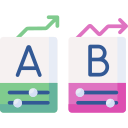Delivery Timeline and Stakeholder Confidence
Start with a thin vertical slice: authentication, one core feature, and observability. Compare Flutter, React Native, and .NET MAUI against the same requirements. Share results openly so stakeholders understand why trade-offs favor maintainability, performance, or platform fidelity.
Delivery Timeline and Stakeholder Confidence
Guardrail your backlog with linting, type safety, and design tokens. Invest in a component library and release notes discipline. Encourage engineers to submit small, frequent pull requests. Comment with your current bottleneck, and we’ll suggest a targeted, tool-aware optimization.











